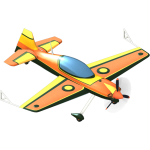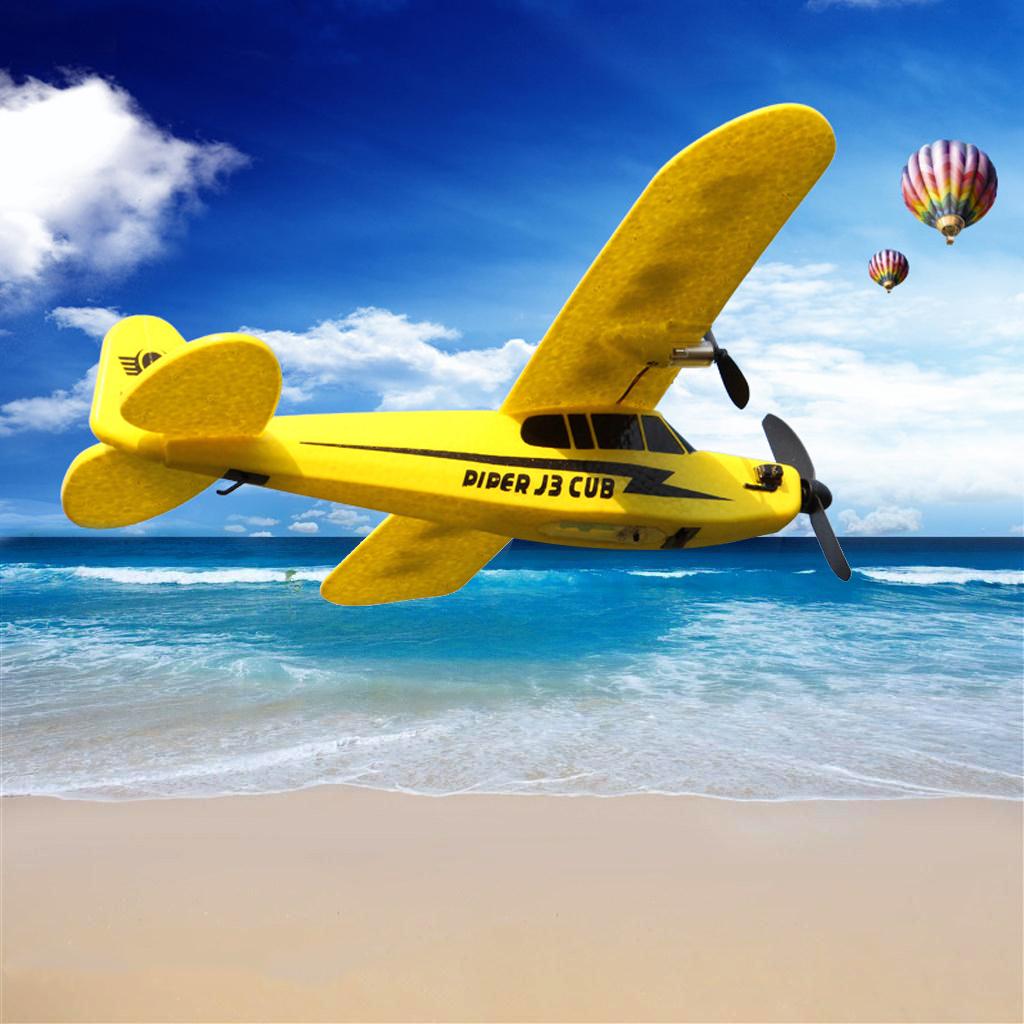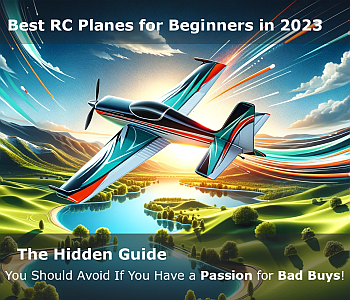Hello, fellow adventurers! Have you ever dreamed of soaring the skies, feeling the rush of the wind against your wings, all while basking in the warmth of a golden sun? Well, you can experience this thrilling journey right in the palm of your hands – with a radio-controlled (RC) plane! Welcome to our exciting guide about flying RC planes at the seaside. Whether you’re a seasoned flyer or a bright-eyed novice, this guide is your ticket to making the most of your beachside flights.
best rc planes
best beginner rc plane
rc planes
rc planes for beginners
large rc planes
Imagine this: the azure sky above, the glittering sea stretching out before you, and the soft sand under your feet. The sun shines brightly, casting playful shadows on the beach, and there you are, skillfully guiding your RC plane through the air. It’s a unique and exhilarating experience that blends the tranquility of the beach with the excitement of flight.
In this guide, we’ll explore everything you need to know to make this scene a reality. From understanding your aircraft, preparing for a seaside flight, mastering the elements, avoiding common mistakes, and much more. So, buckle up, pilots—it’s time to take off into the world of beachside RC flying!
What Makes Flying RC Planes on a Sunny Beach So Special?
Contents
- What Makes Flying RC Planes on a Sunny Beach So Special?
- Understanding Your RC Plane
- Preparing for a Seaside Flight
- Mastering the Elements: Sun, Sand, and Sea
- Common Mistakes to Avoid When Flying RC Planes on a Sunny Beach
- Responsible Beach Flying
- Emergency Procedures
- Improving Your Beach Flying Skills
- Key Points to Remember When Flying RC Planes on a Sunny Beach
- Additional Resources
When you think of a sunny beach, you might envision sunbathers, surfers, and sandcastles. But imagine this: you’re there with your RC plane, the ocean breeze at your back, the sun casting long shadows on the sand, and the vast blue sky serving as the perfect canvas for your high-flying adventure. That’s a picture to remember, isn’t it?
So, what sets apart this beachside escapade with your RC plane? It’s the unique blend of elements that come together to create an unparalleled flying experience.
Firstly, the expansive openness of the beach provides an unobstructed flying environment. It’s a liberating space where your plane can glide, swoop, and perform tricks without worrying about bumping into trees or buildings. There’s a sense of freedom that’s hard to replicate in a typical backyard setting.
Secondly, the beach’s natural elements add to the excitement. The sun, with its radiant warmth, lights up your plane, making it easy to follow its flight path against the clear blue sky. The sand provides a soft landing cushion, reducing the impact of any less-than-perfect landings. And let’s not forget the role of the ocean breeze. It’s a challenge to master, yes, but also an ally, helping your plane achieve impressive heights and speeds when harnessed correctly.
Lastly, there’s something truly special about the ambiance of a sunny beach. The rhythmic lull of the waves, the calls of the seagulls, the laughter and cheer of other beach-goers – all these form a serene backdrop to your flying session. It’s not just about operating your RC plane; it’s about being immersed in a vibrant, dynamic environment that amplifies the joy of your hobby.
That’s the magic of flying RC planes on a sunny beach. It’s more than a pastime – it’s an adventure, a dance with nature, a test of skill, and a source of pure, unadulterated joy.
Understanding Your RC Plane
Before you embark on your beachside aviation adventure, let’s delve into the fascinating world of RC planes. These intricate marvels of technology are more than just toys; they’re miniature aircraft, each with its unique characteristics and capabilities.
First, you need to familiarize yourself with the type of RC plane you have. There are various types, including trainers, gliders, warbirds, and jets, each offering a different flight experience. Trainers are typically the best choice for beginners due to their stability and ease of control, while gliders are excellent for enjoying long, relaxing flights. Warbirds and jets, on the other hand, provide speed and excitement for the more experienced pilots.
Once you’ve identified your type of RC plane, it’s crucial to understand its basic components. These typically include the fuselage (the body of the plane), the wings, the tail, the propeller, and the landing gear. Inside the fuselage, you’ll find the battery, the motor, and the RC equipment that receives signals from your controller.
The next step is understanding your RC plane’s specific capabilities. How long can it stay airborne on a single charge? How fast can it fly? How well does it handle wind? What’s its range of operation? The answers to these questions will not only help you operate your plane more effectively but will also give you a sense of what to expect when you take to the skies at the beach.
Remember, each RC plane is unique, just like a real aircraft. They each have their idiosyncrasies and distinct behaviors in flight. Flying your RC plane at the beach can present a whole new set of challenges, so it’s vital to know your plane inside out. The more you understand about your RC plane, the more you can get out of your beach flying experience.
In the next section, we’ll delve into the specifics of preparing for a seaside flight, ensuring you’re all set to safely navigate the beach skies. Stay tuned!
Preparing for a Seaside Flight
Ahh, the allure of the beach! The sun, the sand, and the sea – it’s an RC pilot’s dream. But before you dash off into the azure skies, there are some vital preparations to be made.
Firstly, carry out your routine pre-flight checks. Make sure your batteries are fully charged – you don’t want your plane running out of juice mid-air! Inspect the propellers for any cracks or damage, and ensure they’re securely attached. Don’t forget to test your controls too; it’s essential that the signals between your transmitter and the plane’s receiver are working flawlessly.
Next, you’ll want to scout out the perfect location. Look for a spot with plenty of open space, free from crowds. You’re going to need a clear flight path for your plane and a safe distance from sunbathers and sandcastle builders alike. Also, consider the direction of the wind and position yourself so that you can launch your plane into the wind.
Another crucial aspect to consider when preparing for a seaside flight is your own wellbeing. In the excitement of flying, it’s easy to forget about personal comfort. But remember, you’ll be standing in the sun, possibly for extended periods. Apply plenty of sunblock, wear a hat and sunglasses, and stay hydrated. Your performance as a pilot is directly linked to your comfort and wellbeing.
Finally, don’t forget to pack any tools or spare parts you might need. Accidents do happen, especially when you’re flying in unfamiliar territory, and it’s always better to be prepared. A spare propeller, extra batteries, or a toolkit can save the day.
By taking the time to prepare, you’ll set yourself up for a successful flight. A little forethought can mean the difference between an unforgettable beach flying experience and a day of frustrations. So check, double-check, and then… happy flying!
In the following section, we’ll explore how to master the elements of sun, sand, and sea. Stick around!
Mastering the Elements: Sun, Sand, and Sea
Flying an RC plane at the beach isn’t just about controlling your aircraft; it’s also about understanding and navigating the unique elements that come with the coastal environment. Let’s delve into how the sun, sand, and sea can impact your flight, and the best ways to tackle these challenges.
The Sun: Sunshine is what makes a day at the beach so enjoyable, but it can pose some challenges for RC pilots. Glare from the sun can make it hard to see your plane, especially when it’s high in the sky. Consider wearing polarized sunglasses to reduce glare and help you keep a keen eye on your aircraft. Also, keep in mind that heat can affect your plane’s performance, potentially shortening battery life. Try to schedule your flights for cooler parts of the day, such as early morning or late afternoon.
The Sand: While it’s fun to walk on, sand can be a menace for RC planes. It can get into the motors and moving parts, causing damage and affecting performance. To minimize sand interference, consider taking off and landing on a portable mat or similar surface, and always clean your plane thoroughly after each flight. It’s also a good idea to avoid low-flying maneuvers over the sand where possible.
The Sea: The ocean is one of the most significant challenges when flying on the beach. Salt water is highly corrosive, and even a brief dip can cause serious damage to your plane. Ensure you’re flying a safe distance from the waves, and always be mindful of the wind direction, as it can quickly blow your plane towards the water. Additionally, strong seaside breezes can make controlling your plane more difficult, so start with gentle maneuvers until you get a feel for the conditions.
Mastering these elements requires a blend of preparation, adaptation, and caution. But don’t let these challenges deter you. Embrace them! They’re part of what makes beach flying such a unique and rewarding experience.
In the next section, we’ll be looking at some common pitfalls to avoid when flying your RC plane on a sunny beach. Stay with us!
Common Mistakes to Avoid When Flying RC Planes on a Sunny Beach
Venturing into the world of beach flying with your RC plane is a thrilling experience. However, even seasoned pilots can stumble upon some common pitfalls. To help you sidestep these errors, here are some frequent missteps to watch out for:
Underestimating the Wind: Coastal breezes are often stronger than they seem and can quickly carry your plane away from you or, worse, towards the sea. Always check the wind speed and direction before you fly, and adjust your controls accordingly.
Ignoring Sun Protection: It’s easy to lose track of time when you’re engrossed in flying. But remember, you’re under the sun, and it’s important to shield yourself. Neglecting to wear sunblock, a hat, or sunglasses can lead to sunburn and discomfort, affecting your ability to control your plane effectively.
Forgetting to Check Battery Levels: There’s nothing worse than your RC plane running out of power mid-flight, especially over water. Always ensure your batteries are fully charged before you start, and consider bringing spares, just in case.
Flying Too Close to Others: A sunny beach can get crowded, and not everyone may share your enthusiasm for RC planes. Be mindful of other beach-goers and always maintain a safe distance to avoid accidents or disturbing others.
Neglecting Post-Flight Maintenance: Sand can be damaging to your RC plane’s components. Failing to properly clean your plane after a beach flight can lead to long-term damage. Take the time to remove any sand or salt residue from your aircraft before packing it away.
Ignoring Local Rules: Not all beaches permit the use of RC planes. Always check local regulations and restrictions before you take off to avoid any potential fines or upset.
By keeping these common mistakes in mind, you’ll be well on your way to having a safe, enjoyable, and respectful beach flying experience. Remember, preparation and awareness are key!
Up next, we’ll talk about how to be a responsible RC pilot on the beach. Stay tuned!
Responsible Beach Flying
Flying an RC plane on a sunny beach can be a captivating experience, but it’s crucial to remember that we share these beautiful spaces with others. As RC pilots, we have a responsibility to ensure our hobby doesn’t negatively impact the environment or disrupt the enjoyment of fellow beach-goers. Here are some tips to help you fly responsibly:
Respect Other Beach-Goers: Beaches can be crowded, especially on sunny days. Always maintain a safe and respectful distance from other people to ensure their safety and prevent any disturbances. Remember, not everyone may be as enthusiastic about your RC plane as you are!
Preserve Wildlife: Many beaches are home to a variety of wildlife, some of which might be nesting or resting on the sand. Keep an eye out for any animals and give them plenty of space. Avoid flying too close to birds, as the noise and movement of your plane could scare them.
Follow Local Rules: Different beaches have different rules regarding RC flying. Some may have designated areas for flying, while others might prohibit it altogether. Always check local regulations before you start your flight to avoid any potential issues.
Leave No Trace: Be mindful of your environment and make sure to pack out what you pack in. This includes any parts that might break off your plane during a crash. Leaving no trace helps keep our beaches clean and safe for everyone to enjoy.
Manage Noise Levels: While the sound of an RC plane might be music to your ears, it could be a nuisance to others. Try to fly during less crowded times, or choose a remote part of the beach to minimize any potential disruption.
By adhering to these guidelines, you can enjoy the thrill of beach flying while ensuring that everyone else can enjoy their day at the beach too. It’s all about mutual respect and a love for our shared outdoor spaces.
In our next section, we’ll discuss emergency procedures for those unexpected situations. Stay with us!
Emergency Procedures
When you’re piloting an RC plane, especially in a unique environment like a sunny beach, unexpected situations can arise. From sudden gusts of wind to a nosediving aircraft, it’s essential to be prepared. Here are some emergency procedures to keep in mind:
Loss of Control: If you lose control of your plane, try not to panic. First, reduce the throttle to minimize any potential damage upon impact. Next, steer your plane away from people, animals, and any structures. Once it’s safe to do so, attempt to regain control and guide your plane to a soft landing.
Loss of Signal: In the event of a signal loss, your RC plane may either hover in place or initiate a return-to-home function, depending on its features. If possible, try moving closer to the plane or repositioning your controller to restore the signal.
Low Battery: If your controller indicates a low battery, it’s time to bring your plane in for a landing. Gradually decrease the altitude and guide your plane back to your starting location. It’s better to land a little early than risk a crash due to a drained battery.
Crash Landing: If a crash is inevitable, aim for a soft landing spot away from people and structures. Once your plane has landed, retrieve it as soon as it’s safe to do so. Check for any damages before attempting another flight.
Water Landing: If your plane ends up in the water, retrieve it as quickly and safely as possible. Saltwater can be damaging, so it’s important to clean your plane thoroughly and let it dry out before inspecting it for any damages.
Remember, safety should always be your priority when flying an RC plane. By knowing how to react in an emergency, you can help prevent injuries and minimize damage to your aircraft.
In the final section, we’ll wrap up with some key points to remember when flying your RC plane on a sunny beach. Don’t go away!
Improving Your Beach Flying Skills
So, you’ve dipped your toes into the sparkling world of beach flying, and now you’re looking to take your abilities to the next level? You’re in the right place! The beach is a fantastic outdoor playground for RC plane enthusiasts, providing a unique combination of open space, natural obstacles, and versatile wind conditions that can truly put your piloting skills to the test.
Firstly, let’s talk about harnessing the wind. While a gusty day might seem like a no-go for your beach flying escapades, it’s actually an excellent opportunity to learn how to use the wind to your advantage. Practice flying into the wind, across it, and with it at your back. Each of these scenarios requires different techniques and adjustments, making you a more versatile and adaptable pilot. Remember, the key is to make small, gradual changes to your controls, and always keep a keen eye on your plane’s response.
Next up is mastering take-offs and landings on sand. The beach’s soft, shifting surface can present a challenge to even the most experienced flyers. To smooth your beach take-offs, try launching your plane by hand, if it’s light enough, or use a portable runway mat designed for RC planes. As for landings, aim to touch down as gently as possible to prevent your plane from flipping over or getting damaged. Over time, you’ll develop a feel for the perfect sand landing—it’s a skill that’s as satisfying as it is useful!
Another thrilling aspect of beach flying is navigating around natural obstacles. Whether it’s a towering sand dune or a cluster of beach umbrellas, these can serve as exciting additions to your flying course. Try setting yourself challenges, like swooping around a particular landmark or performing a loop over the crest of a wave. Just remember to always keep safety in mind, maintaining a good distance from people, wildlife, and any personal property.
Lastly, consider joining a local RC flying club or participating in online forums. These communities are gold mines of advice, experience, and camaraderie. Engage in friendly competitions, learn from seasoned flyers, and share your own beach flying tales. After all, improvement often comes fastest when we learn together.
Remember, the journey to becoming a seasoned beach flyer doesn’t happen overnight. It takes patience, practice, and a positive attitude. So, embrace each flight as a new learning experience and savor the thrill of each new skill you acquire. Happy flying!
I hope this section reads naturally and provides useful information for native English speakers looking to improve their beach flying skills.
Key Points to Remember When Flying RC Planes on a Sunny Beach
Embarking on an RC plane adventure by the seaside is a thrilling endeavor, but it’s important to keep certain key points in mind to ensure a safe and enjoyable flight. Here are the essential insights to guide your beach flying experience:
- Understand your Plane: Know your aircraft’s abilities inside and out. Familiarize yourself with its handling characteristics, range, and battery life. Remember, different models react differently to the same conditions.
- Check Weather Conditions: Coastal weather can be unpredictable. Be aware of the day’s forecast and keep an eye out for sudden changes. Remember that strong winds and rain can make flying an RC plane more challenging.
- Prepare your Flight Area: Choose a broad, open area for take-off and landing, away from beachgoers and wildlife. Be mindful of any regulations regarding RC flying in your chosen location.
- Protect your Plane from the Elements: Sun, sand, and sea are part of the beach’s charm but can be harsh on your RC plane. Protect your aircraft from direct sunlight when not in use, and try to keep sand out of the mechanisms as much as possible.
- Stay Hydrated and Sun-protected: This might seem a little off-topic, but remember, you are also exposed to the elements. Wear a hat, apply sunblock, and drink plenty of water.
- Practice Responsible Flying: Respect other people’s space and local wildlife. Always maintain a safe distance from others and never harass animals with your plane.
- Be Prepared for Emergencies: Have a plan in case of a crash or malfunction. Know how to perform an emergency stop and retrieve your plane if it ends up in the water.
- Take Care of your Equipment Post-flight: After your beach flight, clean your plane carefully to remove any sand or salt that could cause damage over time.
Remember, the key to a successful flight is preparation, respect for others, and understanding your surroundings. Keep these points in mind, and you’re sure to have a fantastic RC flying experience on your next sunny beach outing.
Conclusion
As we bring our journey to a close, it’s clear to see that flying an RC plane on a sunny beach isn’t just another day at the park—it’s an exhilarating adventure that combines the thrill of piloting with the unique challenges and rewards of a seaside environment.
From understanding your trusty RC plane and preparing it for a coastal flight, to mastering the elements and avoiding common mishaps, we’ve navigated through a treasure trove of tips and advice. We’ve also highlighted the importance of flying responsibly, respecting our fellow beach-goers, the local wildlife, and the rules that keep us all safe.
The key points we discussed serve as your compass, guiding you to become a skillful and responsible beach flyer. Remember, every flight is an opportunity to learn and improve, and every challenge is a chance to become a better pilot.
But most importantly, never forget the joy and exhilaration that comes with guiding your RC plane through the warm, sunlit sky, against the backdrop of the sparkling sea. This is what makes beach flying so special—it’s not just about the flight, but also the unique journey and the memories you create along the way.
So go ahead, embrace the adventure, soak in the sun, and let your RC plane soar on the beach. After all, there’s a whole sky waiting for you.
Happy flying!
Additional Resources
So, you’ve made it to the end of our journey together, but this doesn’t have to be the end of your quest to become an expert beach flyer. We’ve covered a lot of ground, but there’s always more to explore in the vast landscape of RC plane flying, especially when you’re heading to the beach. Let’s look at some additional resources that can help you dive even deeper into this fascinating hobby.
- Communities and Forums
- RCGroups: This is one of the largest online communities dedicated to RC enthusiasts. Here, you’ll find a plethora of threads about beach flying, troubleshooting, and even some friendly banter with fellow hobbyists.
- Flite Test Forum: This community, brought to you by the creators of the popular Flite Test YouTube channel, is another treasure trove of information and discussions about all things RC, including beach flying.
- Online Courses and Tutorials
- YouTube Channels: There’s a wealth of knowledge available on channels like Flite Test and RCModelReviews. These channels have tutorials and guides that will show you the ropes, from simple maneuvers to complex aerobatics, all of which can be applied to beach flying.
- Udemy: They offer several comprehensive courses on flying RC planes. Although they might not be beach-specific, the skills and knowledge you acquire will certainly be useful when you hit the sand.
- Recommended Gear
- Waterproof RC Planes: Brands like E-flite and HobbyZone offer models that are designed to handle the rigors of beach flying. They come with waterproof components that can withstand the occasional splash.
- Sunscreen and Hydration: Don’t forget to protect yourself too! Remember to pack a high SPF sunscreen and plenty of water on your beach flying adventures.
Remember, every RC pilot, no matter how experienced, was once a novice. Don’t be afraid to ask questions, share your experiences, and learn from others in the community. After all, that’s what makes this hobby so special – not just the thrill of flight, but the camaraderie among those who share your passion.




